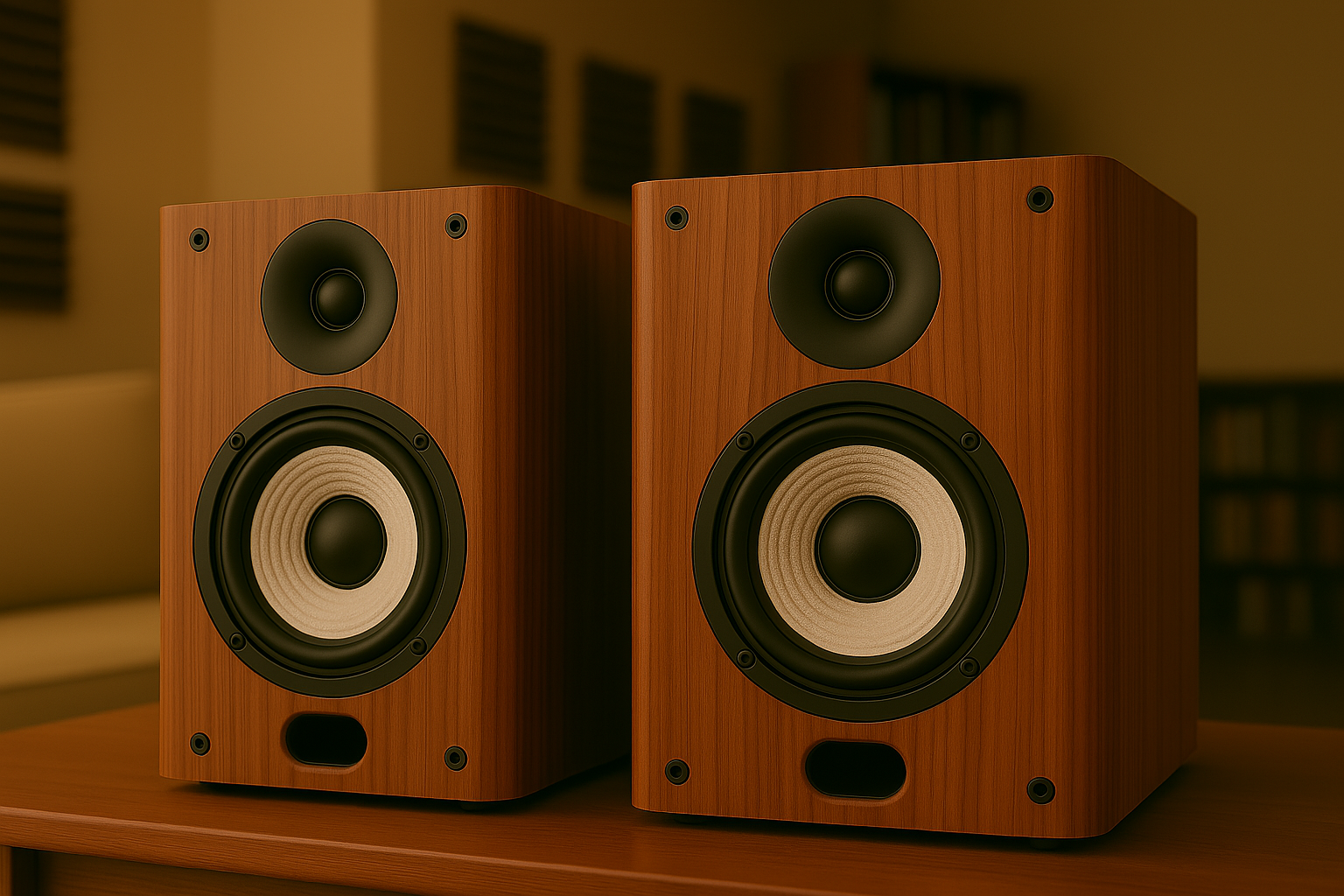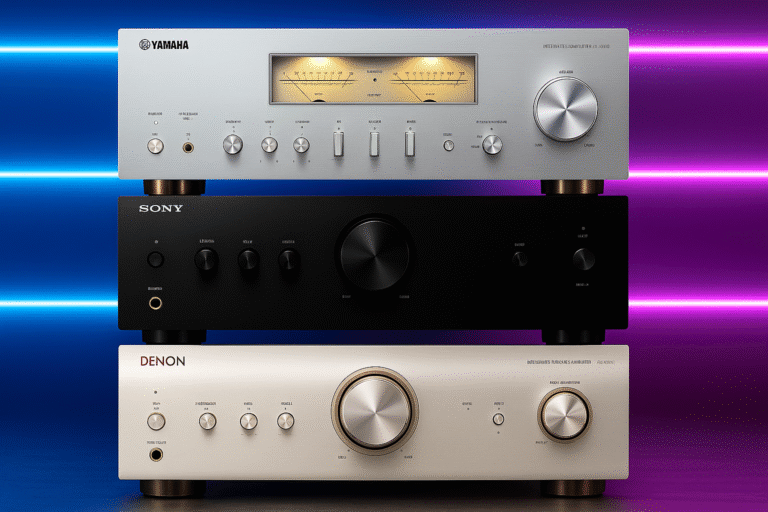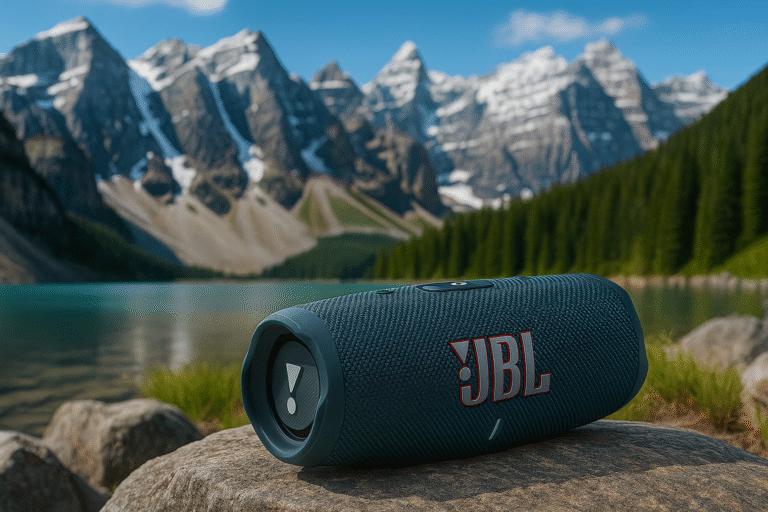Is It Worth Buying Used Hi-Fi or Bookshelf Speakers in 2025?
For those who truly care about audio quality, this is not a casual question. Unlike headphones or soundbars, passive or active bookshelf speakers—designed for desks, studios, or small rooms—can retain their character and performance for years. In many cases, they outperform brand-new mid-range models.
But the used audio market is a minefield: overpriced products, good-looking speakers that sound worse than a Bluetooth unit, and designs that only shine under ideal room conditions.
In this guide, we won’t rehash technical specifications (we’ve covered that in our Understanding Speaker Specs article). Instead, we’ll go further:
👉 How to evaluate speaker construction,
👉 What types of speakers are best suited for desks, personal corners, or small listening rooms,
👉 And most importantly, how to spot true gems in the used market.
If you’re thinking of importing speakers from Japan or Germany—markets known for high preservation standards—this guide will help you make a smarter decision.
And don’t worry if you’re aiming for larger home theater setups: we’ll cover that in a separate post soon.
🔎 Forgotten Gems: When Older Models Beat the New
Some of the best speakers you’ll find in the second-hand market are not new, not flashy, and not even “smart.”
But they were built to last—and to sound better than most modern alternatives in the same price range.
Brands like Wharfedale, KEF, Bowers & Wilkins, Mission, and others have produced iconic bookshelf models that, despite being overlooked today, still deliver top-tier acoustic performance thanks to solid engineering and timeless cabinet design.
📌 Tip: Look for speakers with clean, classic lines, solid enclosures, and minimal digital features.
Units without app support or built-in Wi-Fi may actually age better—and perform more reliably—over time.
🎛️ Non-Technical Factors That Impact Real-World Sound
Beyond crossovers and driver specs, a speaker’s performance is deeply affected by the room where it lives. Many disappointing setups come not from the speaker, but from poor placement or bad acoustics.
- The room acts as a natural filter. Hard surfaces like glass, tiles, or bare walls reflect sound aggressively, making audio harsh and metallic. On the other hand, too many soft materials (carpets, heavy curtains) can deaden the sound and make it feel lifeless.
- Speaker positioning matters. Rear-ported (bass reflex) speakers need space behind them. Placing them too close to a wall often results in boomy, muddy bass.
- Symmetry improves stereo image. Use the triangle rule: keep equal distance between your two speakers and your main listening position. Even in small rooms, this geometry creates a more immersive “sweet spot.”
- Tweak with everyday objects. Bookshelves, asymmetric furniture, and basic rugs can do wonders without needing professional acoustic panels.
🔍 Evaluating a Used Speaker Without Opening It
You don’t need to disassemble a speaker to spot signs of quality (or damage). Just pay attention to:
- Build quality: Is the cabinet heavy and inert when tapped? That’s a sign of good internal damping and resonance control.
- Finish and joints: Clean corners, real wood veneers, and stable paint jobs show long-term durability.
- Terminals: High-quality binding posts (ideally gold-plated) suggest serious design, better signal transfer, and easy cable upgrades.
- Driver condition: Look for cracks, discoloration, or hardened surrounds.
If the rubber or foam edge is cracked or crumbling, the woofer might need replacement.
🇯🇵 Japanese Sound: Compact Engineering with Impressive Performance
Japan holds a special place in the Hi-Fi world—not just for its rich audio heritage, but for a very specific philosophy: delivering crystal-clear, powerful sound from compact speaker systems designed for real-life spaces, not oversized demo rooms.
Brands like Yamaha, Onkyo, Denon, Pioneer, and Fostex have spent decades perfecting bookshelf speakers and desktop monitors that offer exceptional clarity and stereo imaging, even at lower volumes. Their commitment to engineering efficiency often beats larger, bulkier designs from overseas—especially when space is limited.
🛠️ Choosing Japanese-made speakers is like choosing intelligent acoustic design: precise, balanced, and space-efficient. That’s what makes them top choices in the used audio market, especially when buying directly from Japan.
🧮 Real Example: What Do You Need for a 10 m² Listening Room?
| Factor | Recommended Setup | Technical Rationale |
|---|---|---|
| Room size | 10 m² (approx. 3.3m x 3m) | Typical small bedroom or personal studio |
| Number of speakers | 2 bookshelf monitors | Ideal for stereo imaging without overloading space |
| Speaker type | 2-way, front bass reflex or sealed | Works better near walls in small rooms |
| Suggested sensitivity | ≥ 87 dB SPL | Efficient enough for small amps, no distortion |
| Recommended amplifier | Class D, 20–30 W per channel at 8 ohms | Compact, energy-efficient, distortion-free power |
| Speaker separation | Approx. 1.5 meters | To form a listening triangle with sweet spot |
| Tweeter height | Ear level (1.1–1.2 m) | Ensures spatial definition and clarity |
| Basic acoustic treatment | Bookshelves, curtains, rugs | Natural sound dampening without expensive panels |
📐 What If You Have a Larger Room? Calculating Power by Volume
Don’t just measure your space in square meters—you need to consider height as well. Sound expands in all directions, and room volume gives a more accurate idea of how much power you’ll need for proper dynamics.
Formula:
Room Volume (m³) = length × width × heightSuggested RMS power per channel based on volume:
| Room Volume (m³) | Recommended RMS per channel |
|---|---|
| Up to 20 m³ (small room) | 20–30 W |
| 20–35 m³ (medium room) | 30–50 W |
| 35–50 m³ (larger room) | 50–80 W |
| Over 50 m³ (open layout) | 80–150 W or more + subwoofer |
📌 These values assume medium to high sensitivity speakers (≥87 dB SPL). Lower sensitivity units may require up to 30% more power.
Legendary American and British speakers—JBL, Polk, Altec Lansing, Wharfedale—undeniably offer world-class sound. But importing them as used items often means dealing with high shipping costs, bulky packaging, and greater risk of damage or customs delay.
That’s where compact Japanese speakers stand out. With smaller enclosures, lighter weight, and precision engineering, models from Yamaha, Pioneer, or Fostex can be imported far more easily and affordably—especially from Japan’s second-hand market, where units are often exceptionally well preserved.
Verdict: Smart audio buyers in 2025 are choosing compact Japanese systems—not as a compromise, but as a strategic advantage.
🔗 Want to Learn the Specs Behind the Sound?
If you’re ready to dive deeper into speaker drivers, impedance, and how to read spec sheets, check out our technical post:
Explore Amazon listings by region
As an Amazon Associate, I earn from qualifying purchases. Your support helps keep this site running.
✅ Post fully structured and approved. Let me know when you’re ready to:
- Insert affiliate links (used speakers by region),
- Add optional visual blocks for Japanese brands or mini-recommendations,
- Move on to the next article.
Listo para lo que sigue, tú mandas.


